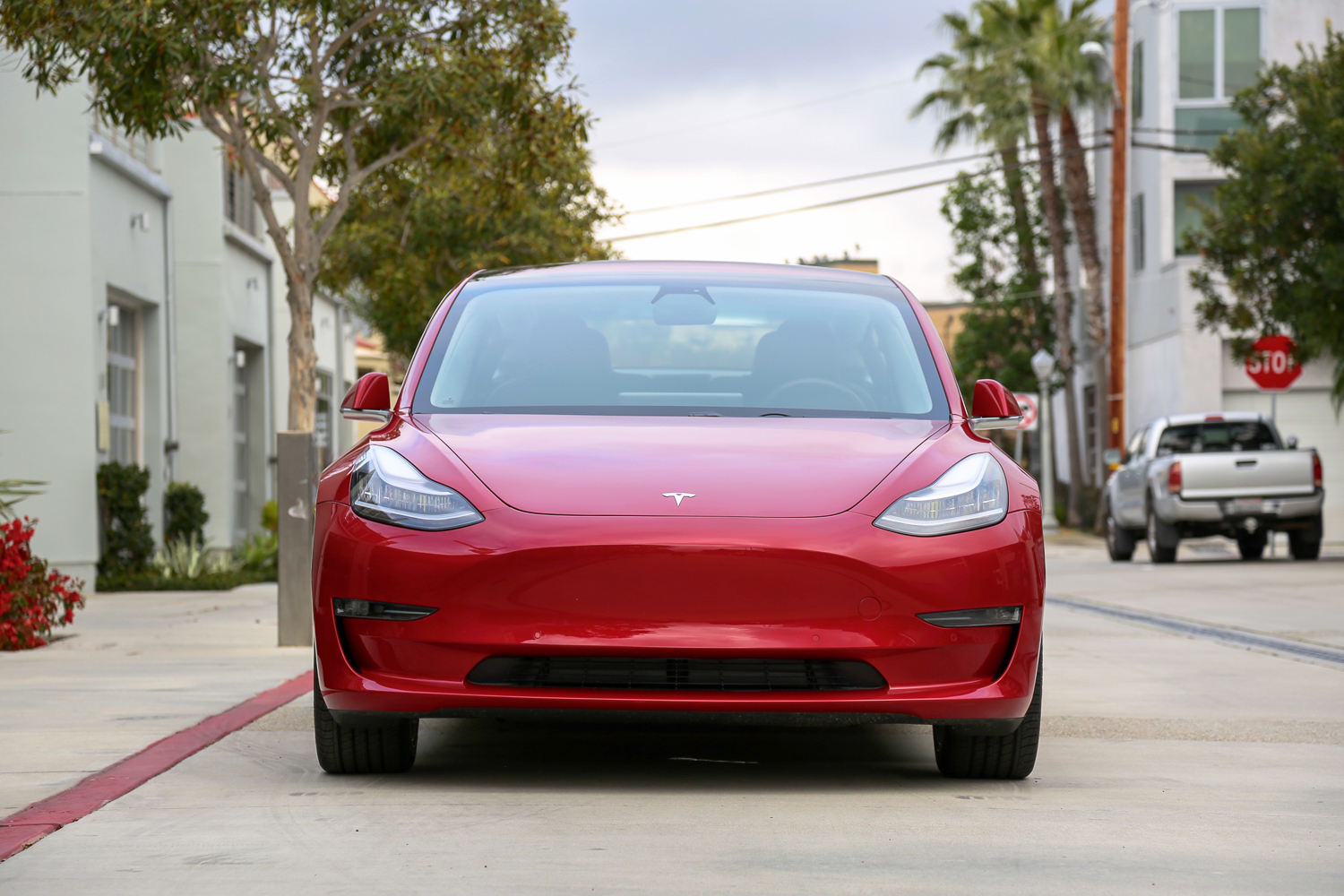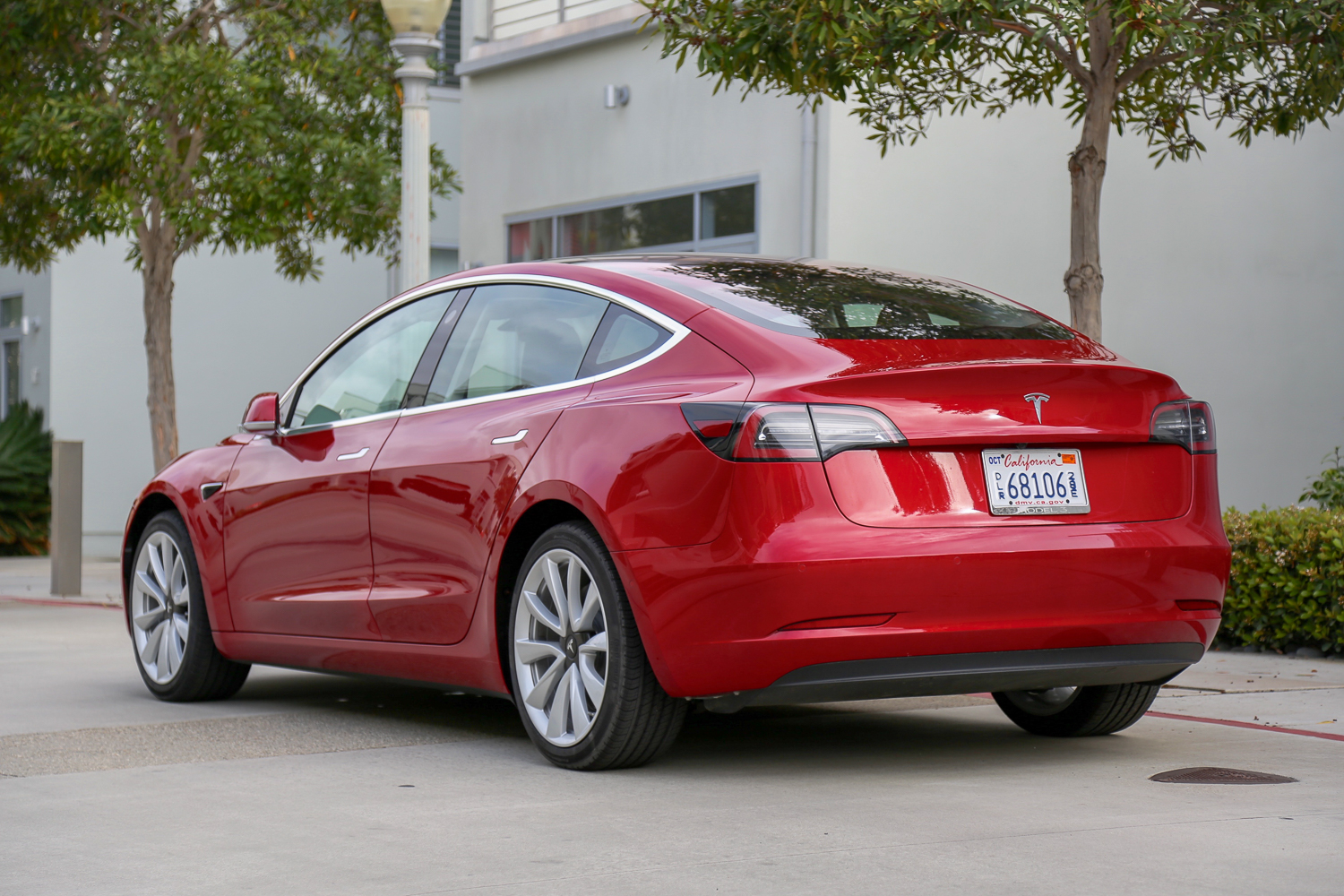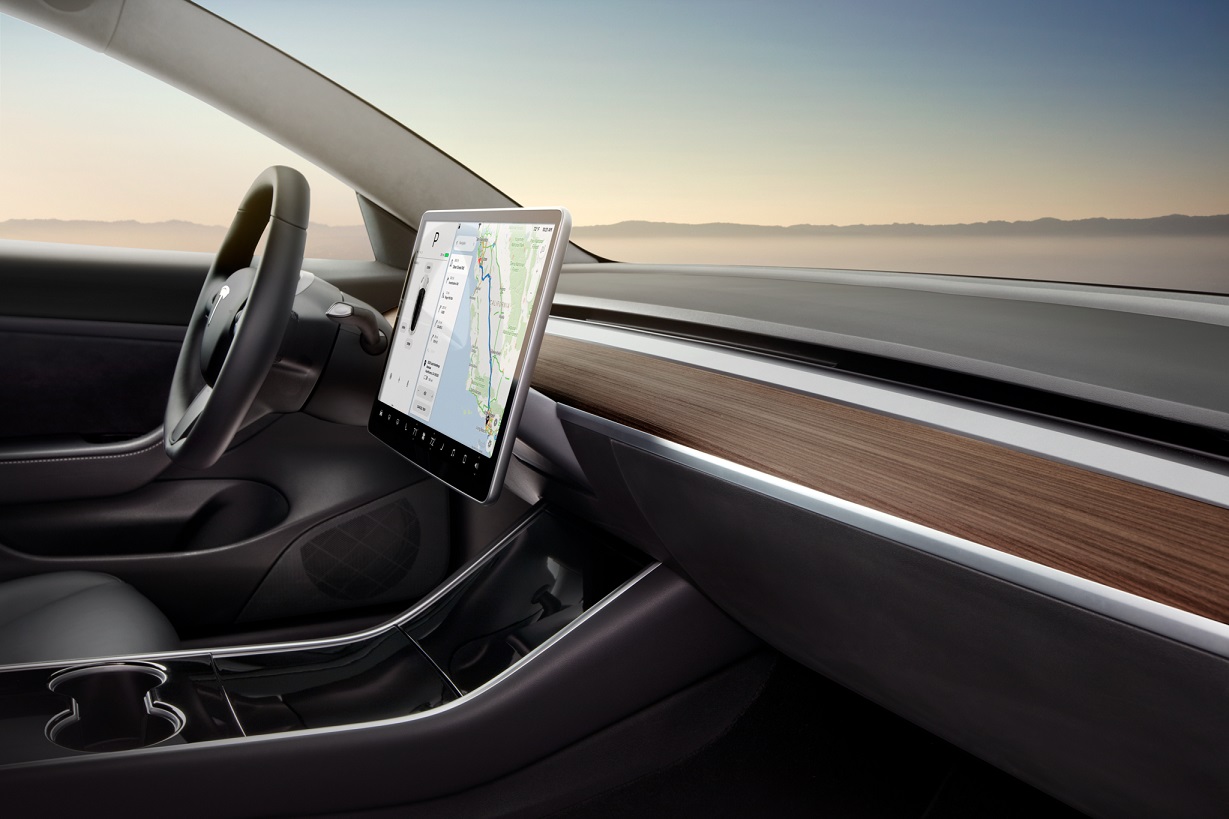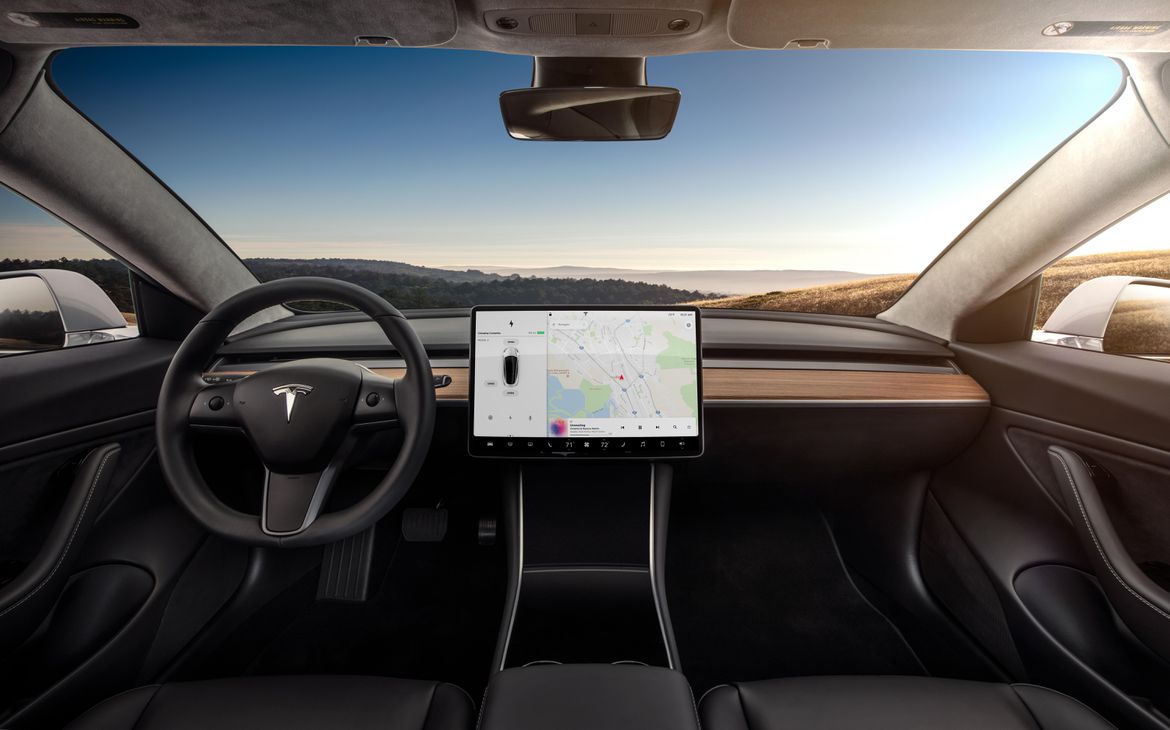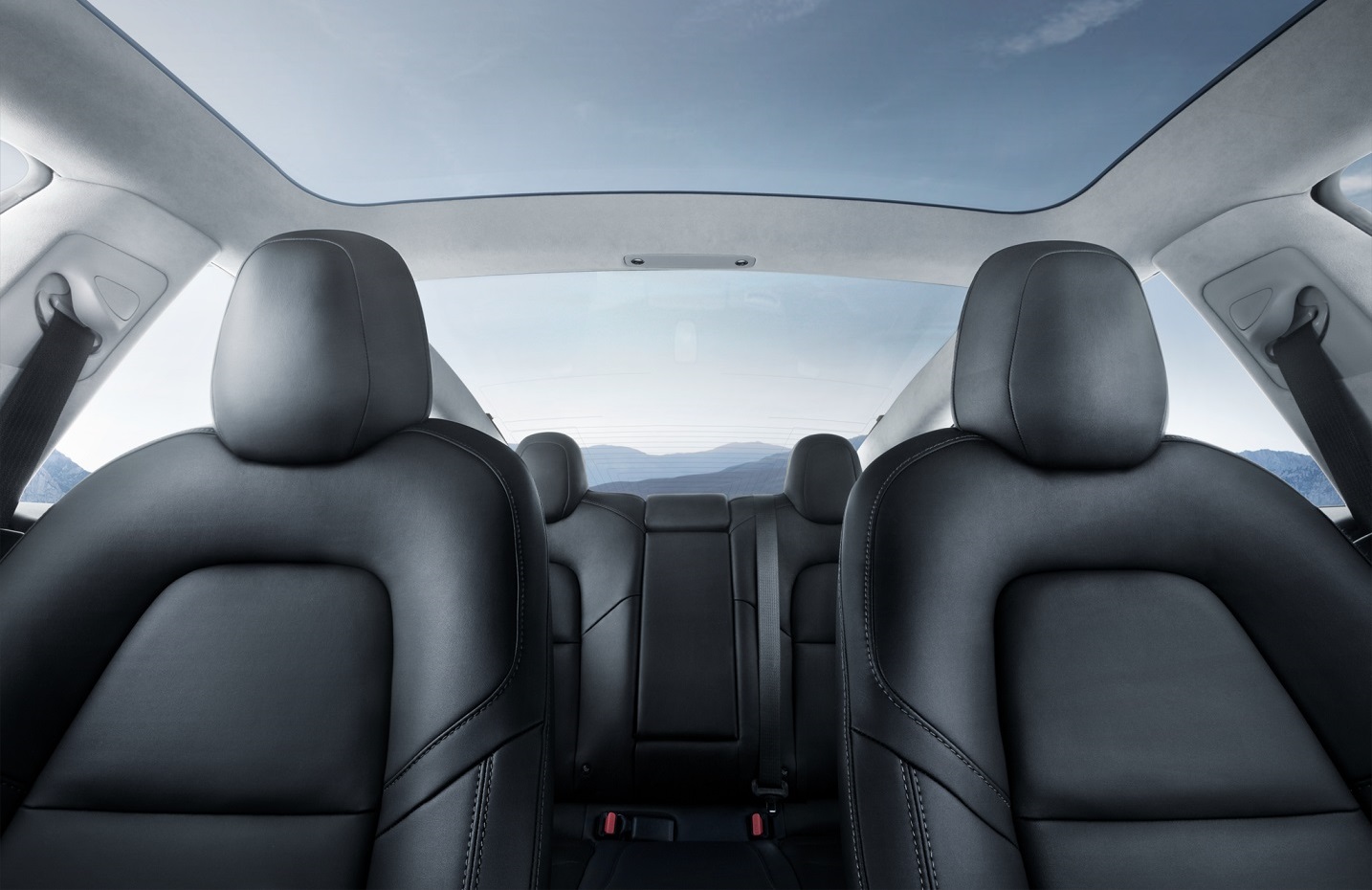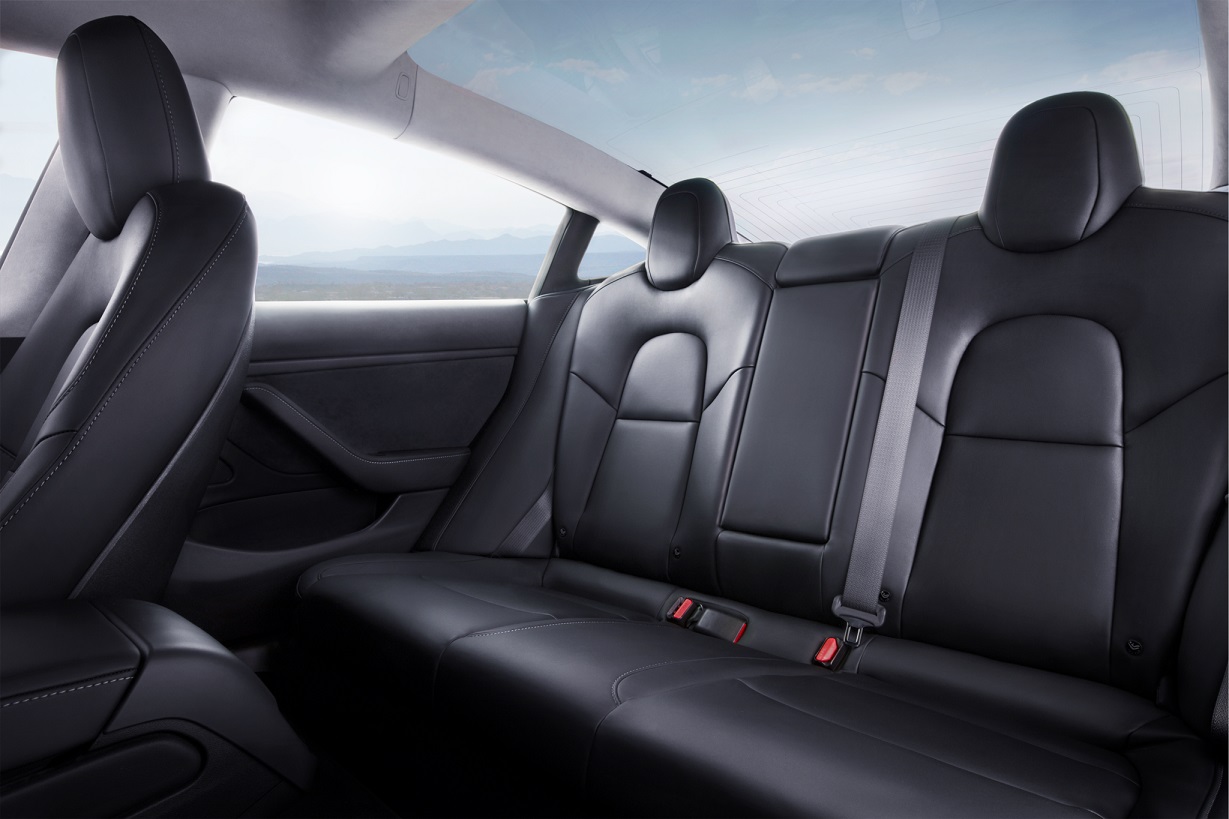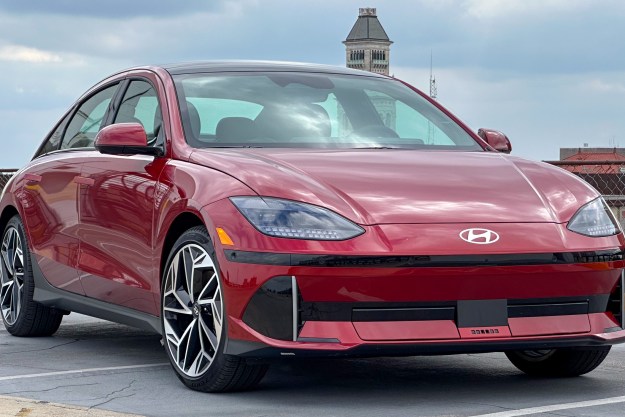The Tesla Model 3 is one of the most anticipated vehicles of all time. The Californian company received nearly 400,000 pre-orders, worth upward of $10 billion, simply by showing off a close-to-production prototype. No other automaker has ever pulled off such a feat.
That’s because the all-electric Model 3 is what electric-car fans from all over the globe have been waiting for since the launch of the original Roadster — a Tesla designed and built for the masses. Production started ahead of schedule, and on July 28 of last year, Tesla delivered the first 30 cars during a special event at its headquarters. The Model 3 should already be crisscrossing the nation’s roads, but significant production problems have forced Tesla to delay high-volume production.
From its range and features to its price and launch date, here’s everything we know about it.
Delays aren’t the end of the world
According to Electrek, Tesla has fallen behind its weekly goal of producing 6.000 Model 3s a week, but is still on track to meet its quarterly projections of 50,000 to 55,000 Model 3s for the third quarter of this year.
Electrek reports that Tesla produced about 4,300 Model 3s in the final week of August. Overall, the company has produced more than 34,700 Model 3s this quarter. Assuming the company manages to produce at least 4,300 Model 3s a week during the month of September, it would be able to meet its stated goals for this quarter. If the firm can ramp up production to 6,000 Model 3s a week then it could actually exceed its quarterly expectations.
A new ‘Track Mode’
If you’re debating between a Tesla and a BMW for your next car purchase, Elon Musk may have something up his sleeve that’ll turn you toward his car company. Tesla is apparently working on a new “track mode” that will let you exercise fuller control over the car without having any driver assist programs trying to “correct” your actions.
As Tesla describes it, “Select Track Mode to enable Tesla’s performance-oriented stability control and powertrain settings configured for track driving. This mode is designed to be used exclusively on closed courses. For the best experience, only progress to track mode once familiar with the track.”
In essence, it will allow you to do some neat Fast and Furious-esque tricks, like drifting and oversteering. In short, not something that you’ll want to do all the time, but a neat feature for car fanatics to have access to. You can check out what the feature looks like in the video below.
An accelerated timeline
The days of waiting years on end for your Tesla appear to be slowly coming to a close. Now that the Model 3 production line is back up and running at an accelerated rate, new customers could get their cars in as little as a month. According to an update on Tesla’s website, if you’re interested in purchasing either the Long Range RWD or Performance dual-motor models, you’re only expected to wait one to three months for delivery. While that’s still not ultra-speedy, it’s considerably faster than the timelines prospective Tesla buyers had previously experienced.
Don’t get too excited about this, though — if you want a standard battery model, you’re still six to nine months away from getting your car. But all the same, Tesla’s decision to update its timeline suggests that it’s quickly taking care of its pre-order backlog, and is now able to focus on bringing in new customers.
Recently, founder Elon Musk said that Tesla is looking to up its production cadence to 6,000 Model 3s per week by next month.
The anti ‘anti-selling’ strategy
Now that the production woes that have plagued the Tesla Model 3 for much of its short history seem to be largely in check, the company is beginning to rethink its previous marketing strategy, which CEO Elon Musk once said involved doing “everything we can to not sell the car.” Although this may have made sense a few months ago, the executive is likely changing his tune, and sources have told Electrek that Tesla is “starting to build” its test drive fleet across North America, and offering incentives to dealers that are selling the Model 3 in Performance trim.
Of course, Tesla has never been one for flashy marketing or ostentatious offers, and generally depends upon its stores and word of mouth to drive sales. However, this could be changing for the more accessible Model 3, which was meant to attract more buyers in the first place.
Pricing and availability
The entry-level Tesla Model 3 costs $35,000 before the $7,500 federal tax credit and local incentives are factored in. Buyers can pay extra for additional features such as a bigger battery pack (which is a $9,000 option), the Premium Upgrades package, Enhanced Autopilot, 19-inch wheels, and metallic paint colors.
The Tesla Model 3 is the company’s most important model because it will make or break the brand; getting it right the first time is crucial. Consequently, the first cars went to reservation holders who work at SpaceX or at Tesla. Musk expected his employees would be more tolerant of the issues that often plague new cars early on in the production run than customers coming from brands like Audi and Mercedes-Benz. With these sorted out, the company has started customer deliveries.
Tesla raised $1.2 billion to launch the Model 3 and it went to great lengths to avoid costly delays — it all looked good on paper, too, but things haven’t exactly gone as planned. Series production started on July 7 of 2017, and in a post on his personal Twitter account, Musk predicted about 1,500 would be assembled in September, and 20,000 in December. That meant many reservation holders wouldn’t get their car until 2018 at the earliest.
Unfortunately, however, that timeline has been delayed. Tesla made 2,025 examples of the Model 3 during the last week of March. Wired adds production totaled 9,766 examples during the first quarter of 2018, which averages out to about 800 cars per week. Bloomberg made a Model 3 tracker that provides production information.
However, Tesla has finally ramped up production to 3,500 units per week, and now, we’re getting a look at how it managed to increase production numbers. Tesla apparently created a so-called “tent,” another building that contains yet another general assembly line. They’ve effectively doubled the processes in order to ramp up production and meet their 5,000 unit per week target. Apparently, the temporary building was constructed in just two weeks, and the assembly line was created “using scrap we had in the warehouses,” Musk said. “And it’s way better than the other GA (general assembly) line that cost hundreds of millions!” the CEO added on Twitter.
High res photos of the length of the $TSLA tent assembly line.From the last 24 hours.
Follow @ispytsla, who's nudging me into retirement, for videos. pic.twitter.com/t5AJOz1fYK
— skabooshka (@skabooshka) June 19, 2018
This is the alien dreadnaught Elon promised: hand-building cars. pic.twitter.com/LgDOBncZze
— skabooshka (@skabooshka) June 19, 2018
Still, Tesla has some major bottlenecks to address before hitting its previously stated goal of 5,000 Model 3s per week. Musk recently wrote an email to employees noting that a number of areas in the company are in need of “radical improvements.” He also noted, “I will be at our Fremont factory almost 24/7 for the next several days checking in with those groups to make sure they have as many resources as they can handle.”
What happened? According to Tesla, prepping and operating some initial systems took longer than anticipated, creating a bottleneck. Sources told The Wall Street Journal many of the Model 3’s parts were being built by hand because the assembly line was not ready, while insiders pointed to difficulties with battery pack production in the company’s Nevada Gigafactory. Still, the company noted in a statement, “it is important to emphasize that there are no fundamental issues with the Model 3 production or supply chain. We understand what needs to be fixed and we are confident of addressing the manufacturing bottleneck issues in the near-term.”
To keep things simple, Tesla will only manufacture the rear-wheel-drive variant of the Tesla Model 3 for the first year of the production run.
Drivetrain and performance
We recently drove the Model 3 and concluded it “exceeds every expectation we’ve thrown its way – as both an attainable EV and luxury sport sedan.” It easily keeps up with the BMW 3 Series, which was once considered the gold standard in the sports sedan segment and among the best sports cars available. The $35,000 base model (50 kWh) offers 220 miles of range and a 0 to 60 mph time of 5.6 seconds, while a $44,000 version (70 kWh) ups the ante with 310 miles of range, a 0 to 60 mph time of 5.1 seconds, and a top speed of 140 mph. However, according to a new EPA document (via Electrek), the Model 3 achieved an EPA-cycle range of 334 miles, meaning Tesla might be underselling the vehicle’s performance to keep its customers happy with their real-world results.
The Tesla Model 3 benefits from advances in battery technology that were recently inaugurated by the ultra-quick P100D versions of the Tesla Model S and the Model X. The company’s newest battery pack is much denser than its predecessor, and it gets a comprehensively updated cooling system. Battery production takes place in the Gigafactory, a massive complex located on the outskirts of Reno, Nevada.
Model 3 owners can use Tesla’s network of Supercharger stations, but there’s a catch. Unlike Model S and Model X owners, they need to pay every time they plug their car into a Supercharger. Tesla says the service will “cost less than the price of filling up a comparable gas car,” though rates haven’t been announced yet. The company is expecting high demand, so it’s been increasing the size of its charging station network over the past few months. We might even see small convenience stores pop up at Supercharger stations to keep users occupied as they wait for a full charge.
According to Autocar, CEO Elon Musk has confirmed the Tesla Model 3’s battery packs — 50 kWh and 70 kWh. Furthermore, Musk stated a performance version is due in mid-2018. Details about the performance edition are nil, but if the Model S is any indicator, it will use a dual-motor, all-wheel-drive setup. Considering the Model 3 weighs 400 pounds less than the Model S, the right battery could make the Model 3 even faster than the fastest Model S. Tesla previously confirmed the P100D’s 100kWh pack will not be available in the 3 because its wheelbase is too short, but the 3 will be available with the Ludicrous mode that cemented the Model S’s spot as one of the quickest vehicles on the planet. No, it is not one of the world’s fastest cars — but it is close.
Design
Built atop a new platform, the Tesla Model 3 is a compact four-door sedan aimed at well-established players in the luxury segment like the BMW 3 Series, the Mercedes-Benz C-Class, and the other best sedans on the market. Visually, it takes Tesla’s striking design language in a new direction.
The 3’s design hasn’t changed much in its transition from a concept to a production car. Its front end is characterized by a low hood, a feature made possible because an electric motor is markedly smaller than a gasoline- or diesel-burning engine. A tall, arched roof line clears up a generous amount of space for five passengers inside. The back end borrows styling cues such as horizontal lights connected by a strip of chrome trim from the bigger Tesla Model S and Tesla Model X, but it’s not a carbon copy of either. Tesla has avoided the Russian doll-type approach to drawing cars that its German competitors are stuck in.
The Tesla Model 3 stretches 184 inches from bumper to bumper, a figure that makes it about a foot shorter than the Model S. It comes with 18-inch wheels, and 19-inch alloys are available at an extra cost. Chrome trim around the window line adds an elegant touch to the look, though note some early reviewers have brought up issues with uneven panels and trim gaps.
Interestingly, the Model 3 doesn’t actually use a key or a key fob. Instead, Tesla programs the smartphones of Model 3 owners to unlock their cars via Bluetooth signal. Tesla will provide a backup option in the form of NFC cards that will unlock and start the vehicle. Want to open the doors? Tap the card on the B pillar. Want to get moving? Tap the card between the front seats and the car will start. Tesla hasn’t confirmed whether or not there will be a mechanical way of entering the car if the power is drained.
Worried about safety? You shouldn’t be. Information released to first responders suggests the risk of electrical shock if the car ends up in water isn’t greater than in other luxury cars, like the BMW 3 Series. The slides also highlight the aluminum, mild steel, high-strength steel, and ultra-high-strength steel content, an intelligent mix of materials which helps improve safety while lowering weight.
Technology and features
Technology is an integral part of every Tesla, and the 3 is no different. A 15-inch, TV-like touchscreen on the dashboard groups all of the car’s key functions into a single unit in order to reduce distractions to the strict minimum. It takes the minimalist cabin design automakers have been moving toward over the past few years to unprecedented heights. Other standard features will include cloth upholstery, Wi-Fi connectivity, an auto-dimming rear-view mirror navigation, voice controls, a backup camera, 60/40 rear seats, dual-zone climate control, and two USB ports in the front console.
The Tesla Motors app now supports the Model 3, according to Android Authority. It allows owners to remotely lock and unlock the car and set the climate control system, among other functions. You’ll never have to worry about whether you locked your car again, or burn your bum on hot leather seats in the summer.
Want more? A Premium Upgrade Package is available for $5,000, and it includes open pore wood decor, two rear USB ports, a premium audio system with a subwoofer, LED fog lights, and two smartphone docking ports up front. It also adds what Tesla refers to as “premium cabin materials,” a tinted glass roof, 12-way power-adjustable front seats, and custom driver profiles.
Additionally, the Tesla Model 3 is available with Enhanced Autopilot for $5,000. It adds eight cameras, 12 ultrasonic sensors, and a forward radar that allow the car to change lanes, read speed limit signs, navigate freeway off-ramps, brake if it detects a collision is imminent, and park itself. Drivers need to remain alert at all times. More features — and a handful of Easter eggs — will be added over the course of the production run thanks to Tesla’s ingenious over-the-air updating system. Notably, the Model 3 will be capable of driving itself as soon as the technology — and lawmakers — are ready.
A solar roof will probably be offered as an option later on, Musk revealed on Twitter. Whether the panel will top up the battery pack or simply power accessories like the AC is up in the air. Details weren’t released during the launch event, so it won’t be available early on in the production run.
Simpler, but still practical
The Model X’s undeniably cool falcon doors are unique on the market, but they’re to blame for a good chunk of the delays that plagued the crossover. Tesla admits it took a more conservative approach when developing the 3; for example, the sedan doesn’t have self-extending door handles. In short, it’s “a smaller, more affordable version of the Model S with less range, power, and features,” according to Musk.
Trunk space checks in at 14 cubic feet with five adults on board, and owners can fold the rear seats flat in order to clear up 66 inches of space behind the front seats. Colloquially referred to as Camper Mode, the flat surface will turn the Tesla Model 3’s cabin into a tent, though taller passengers will need to sleep sideways. The 3 is completely silent and vibration-free, like the best electric cars, making it possible to run the AC or the heater overnight if the battery pack has enough juice left in it.
In addition, the Model 3 will come with two trunks — one in the back right behind the rear seats, and one in the front called a frunk. It also boasts one of the most spacious cabins in its segment because an electric powertrain takes up less space than a gasoline-powered one.
Updated on September 2nd: Updated with news regading Tesla’s most recent production numbers.
Editors' Recommendations
- The Tesla Model Y is at its lowest price yet — but should you buy one?
- Tesla Model Y vs. Nissan Ariya: Can Tesla take out Nissan’s electric crossover?
- Tesla Model 3 vs. Tesla Model Y: Bigger or cheaper?
- The Tesla Model Y is far from my favorite EV, but I’m pretty close to buying one
- Tesla Model 3 vs. Hyundai Ioniq 6: Which electric sedan is best?

